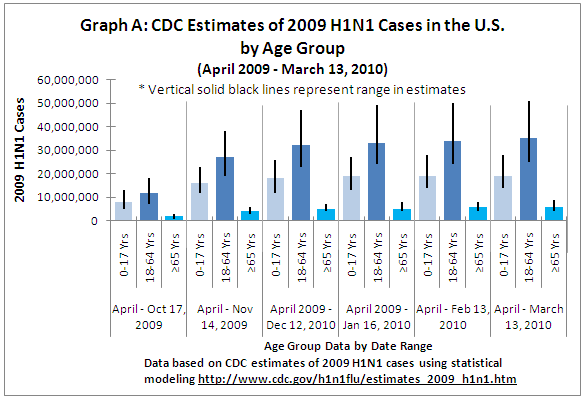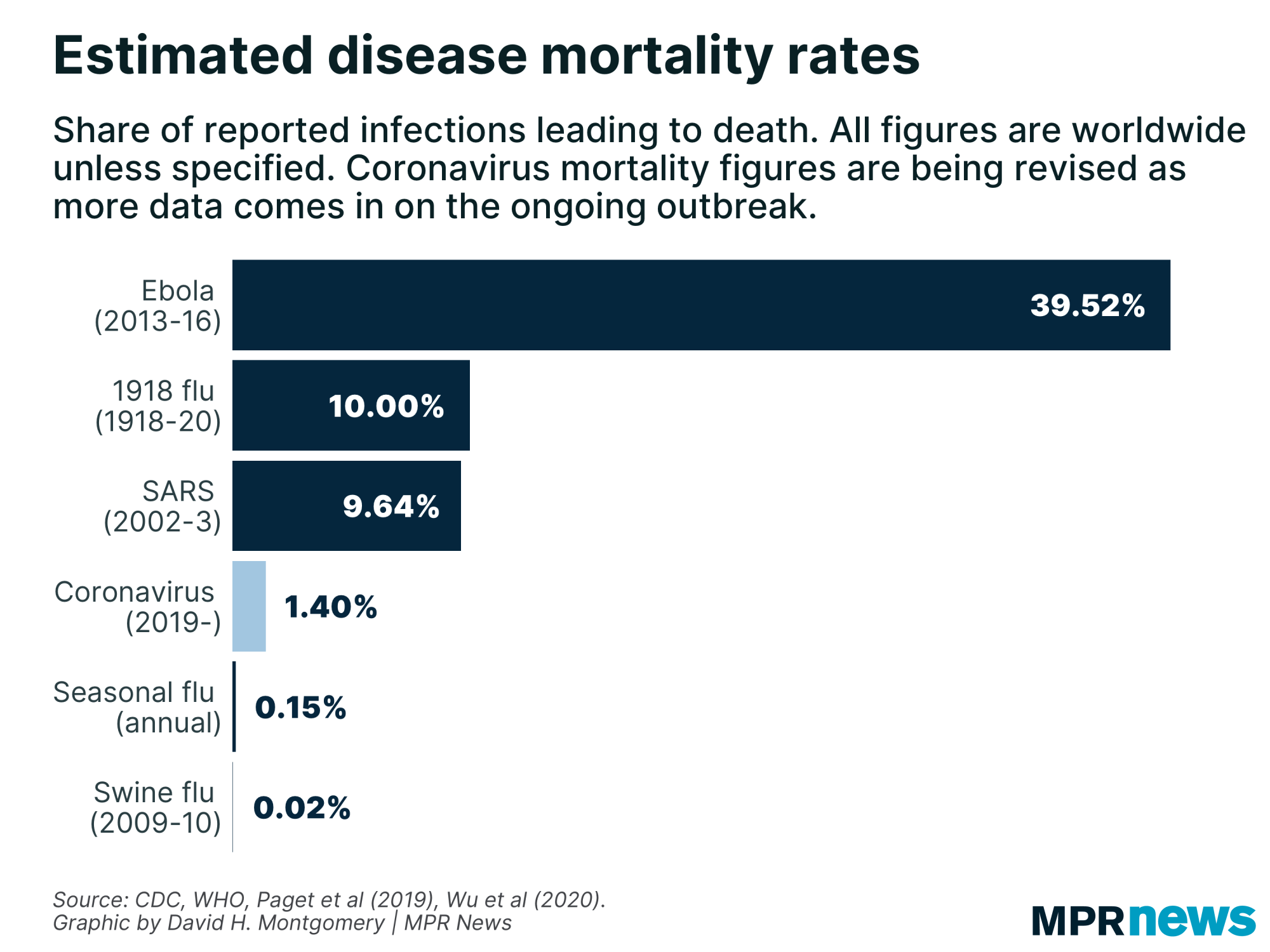More than a decade ago the world witnessed the spread of yet another H1N1 virus. Unlike the strain that struck during WW1, this H1N1 virus is thought to have originally come from pigs (hence the name). It is speculated that the Spanish flu was first transmitted to pigs by humans rather than the other way around, and originated from an avian virus. Swine, avian, and human flu viruses typically can be spread between the groups, allowing them to mutate into new strains.
Yet both pandemics did share one thing in common— they had a huge impact on younger populations. For swine flu, this was a result of the presence of antibodies in older adults that younger adults lacked— and that could not be replicated by the annual flu vaccines—instead of cytokine storms.
In the U.S. alone there were at least 60.8 million cases and 12,469 deaths. In total, 575,400 people died from the disease, a vast majority (80%) being under the age of 65. The pandemic began in California on April 15th, then branched out into states like Texas. By the end of April, the U.S. declared a Public Health Emergency and the CDC was recommending temporarily closing schools. A week later, 980 schools were closed. On June 11, the H1N1 virus officially became a global pandemic. It reached its peak by mid-July, shortly before vaccine testing began. By the time the vaccines were ready, the second wave was well underway. Luckily, the vaccines proved successful, and cases declined dramatically. On August 11, over a year after it began, the pandemic was officially over.
While swine flu had a much lower fatality rate than the usual flu and did not have as great of an impact on the world as other pandemics, its existence does provide possible insights into our current pandemic. Since influenza pandemics occur with 30 to 10 years between them, the fact that COVID-19 appeared in 2019 should not come as a complete surprise. The pandemic also provides support that adequate testing and sharing of tests with other countries can help keep infections under control. Sadly, with COVID-19, the lack of testing and less cooperation between nations has hurt efforts to curtail the coronavirus. The U.S. has been willing to issue stay at home orders and encourage the use of face masks while not making tests readily available—even though it is just as important. We have already seen with South Korea how these measures can benefit people.
Furthermore, the drop in cases following the swine flu vaccine emphasizes just how important it is to create a vaccine for COVID-19. Because of the nature of the novel coronavirus, this will take more time to develop than that of H1N1. The swine flu pandemic had two waves of infections, which is already happening with COVID-19 in areas that have recently begun to relax restrictions. More waves might come in the future, and seeing how long the swine flu epidemic lasted, these waves might not be over for quite some time. We'll just have to wait and see what the future holds.
https://www.cdc.gov/flu/pandemic-resources/2009-pandemic-timeline.html
https://www.cdc.gov/flu/pandemic-resources/2009-h1n1-pandemic.html
https://www.ucsf.edu/news/2009/09/3064/swine-flu-shows-alarming-resemblance-1918-pandemic-ucsf-doc-says
https://www.cbc.ca/news/technology/swine-flu-roots-traced-to-spanish-flu-1.843245
https://www.ncbi.nlm.nih.gov/pmc/articles/PMC3180813/
https://www.propublica.org/article/no-president-trump-the-coronavirus-is-nothing-like-h1n1-swine-flu-either


In order for us to be able to go back to normal life we need a vaccine and until that happens we will be locked in our current state. A vaccine could take a few months or almost a year to develop. Luckily though, Covid-19 doesnt have the same death rate as the SARS virus or 1918 Flu.
ReplyDelete